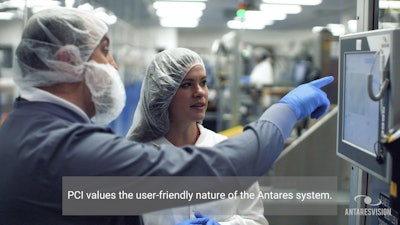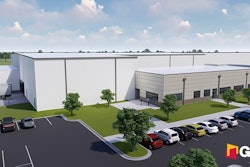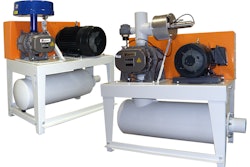PCI Pharma Services is an outsourcing provider delivering manufacturing, clinical, and commercial supply chain services for the biopharmaceutical industry. In preparation for FDA’s DSCSA regulatory requirements, the company made a strategic decision to integrate aggregation with serialization across a wide variety of products and packages.
When searching for a technology partner, PCI focused on the user-friendliness of the system for its production teams on the floor, as well as the ability to perform printing and inspecting along with aggregation all in one process. A key factor in PCI’s decision-making was for its partner to not only understand aggregation but also to have first-hand experience of having built a system around it, incorporating serialization at the same time.
PCI selected Antares Vision and its Antares Tracking System, which was implemented on certain strategic, customer-funded lines. Specific lines needed new modules in order to integrate this tracking system and were equipped with a number of Antares Vision machines along with hardware and software kits.
“The biggest challenge in implementation was physical space on the lines,” says Ray Hook, Director of the Global Serialization Group at PCI. “We have very little room to work with. Our needs were met by purchasing various small foot print Antares Vision machines and hardware kits to integrate into existing equipment, so the line space requirements were kept at a minimum.”
PCI also added new and mobile Print and Check machines from Antares Vision with built-in checkweighers and Tamper Evident Labelers—eliminating the need for separate checkweighers, conveyors and Tamper Evident labelers—fitting the tight space requirements. The company says very few issues occurred during the implementation of the software, so the next big issue was training its employees.
Having identified key employees from the floor who learned the concepts of aggregation easily, PCI coached them to become on-the-job trainers for other operators. The selected personnel understood the struggles of the floor and were able to communicate with their co-workers using clear and relevant terms.
While the first line took nearly three months to install and qualify, this process has since been reduced to two to three weeks. The overall equipment effectiveness (OEE) was impacted on lines into which the Antares Tracking System was integrated, but building the lines with aggregation up front helped PCI to recover the lost OEE, according to the company.
The setup of the tracking system allows PCI to verify aggregated bottles before they are packed, by taking images of the aggregated product. This means that all cases are double checked before being dispatched, which has eliminated a past challenge for PCI with regards to ensuring quality control at each stage of the process.
“Rejects and samples are not allowed to be aggregated with the Antares Tracking System,” says Hook. “So, we not only see benefits from an aggregation standpoint, but also in redundant inspection. We always try to have multiple checkpoints along the line to ensure that the product maintains its quality.”
This verification method through aggregation saves in reconciliation on the backend, fixing issues that can occur—such as when verified bottles and bottle data do not align, according to PCI. It also makes it easy to locate pallets that need to be broken down, to have samples taken, and for product to then be repacked.
Even though it is not always required, PCI is aggregating as much product as possible. This includes the orders of customers who cannot manage aggregated data currently but allow the company to aggregate internally in preparation for the day that their systems will be compatible. For those who can receive the aggregated data, information is communicated through a middleware platform built on Microsoft BizTalk. PCI takes the messages from Antares and its ERP system and translates them into custom messages that the customers require by way of their own dedicated interface.
PCI has since implemented the Antares Tracking System in more than 80 lines spanning four commercial sites in the U.S., U.K. and Ireland, and is continuing the process of outfitting the U.K. and Ireland sites.






















